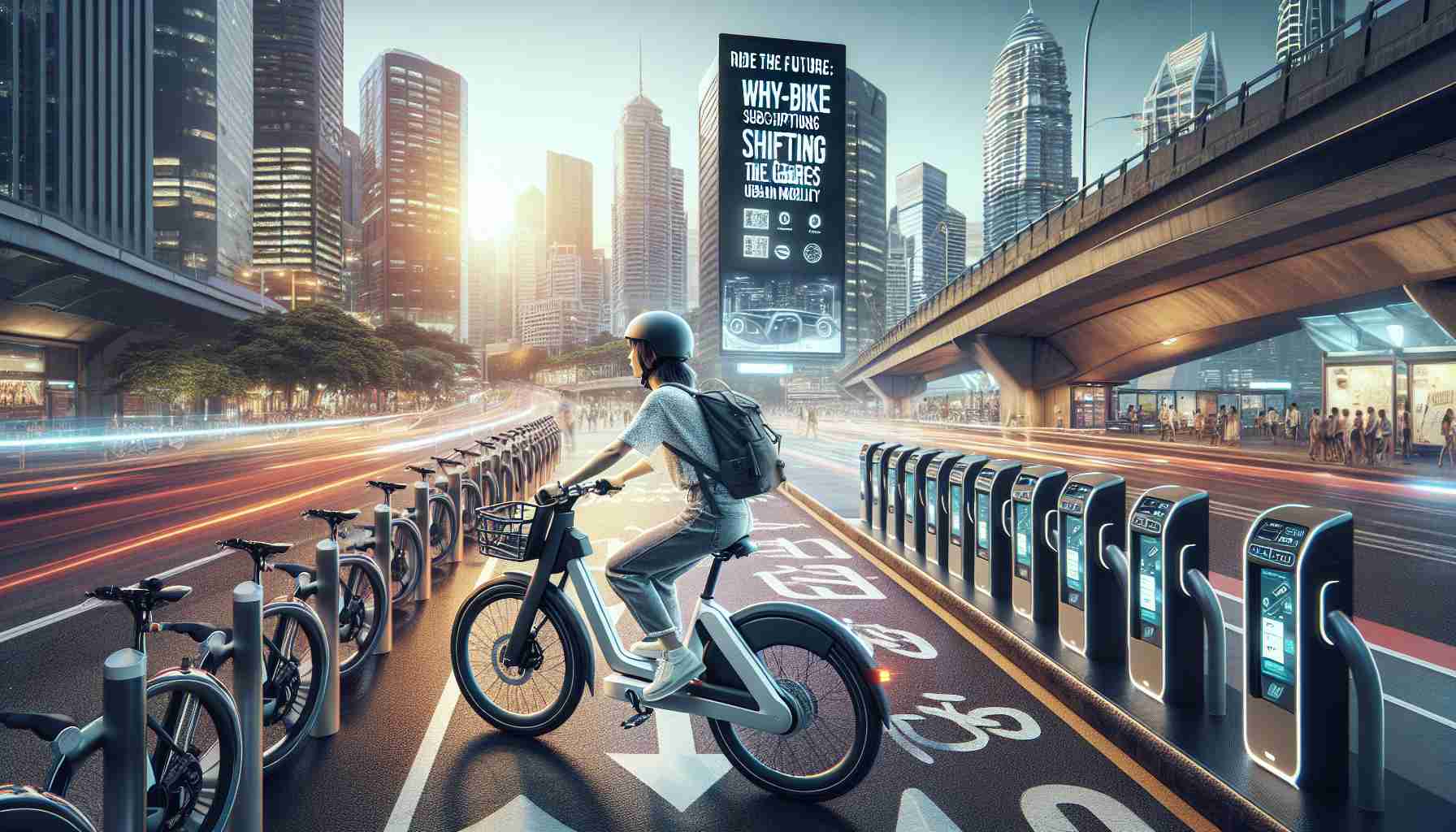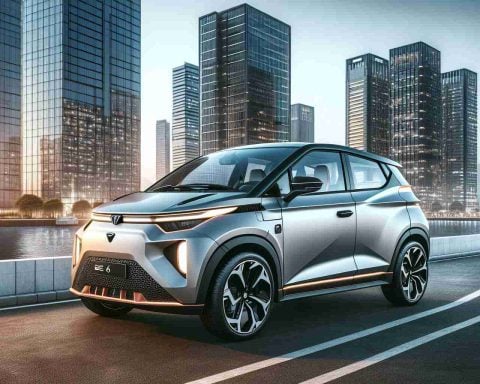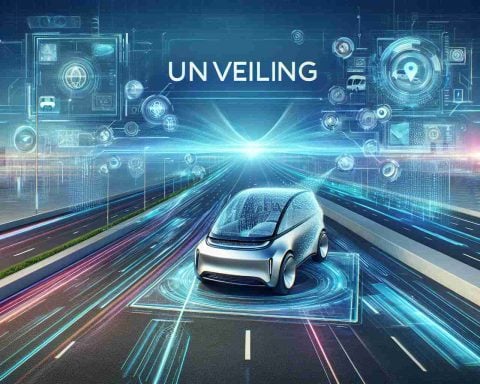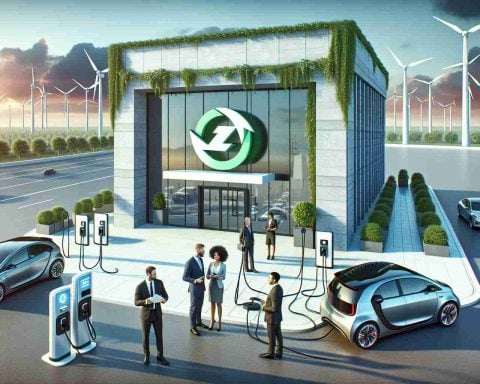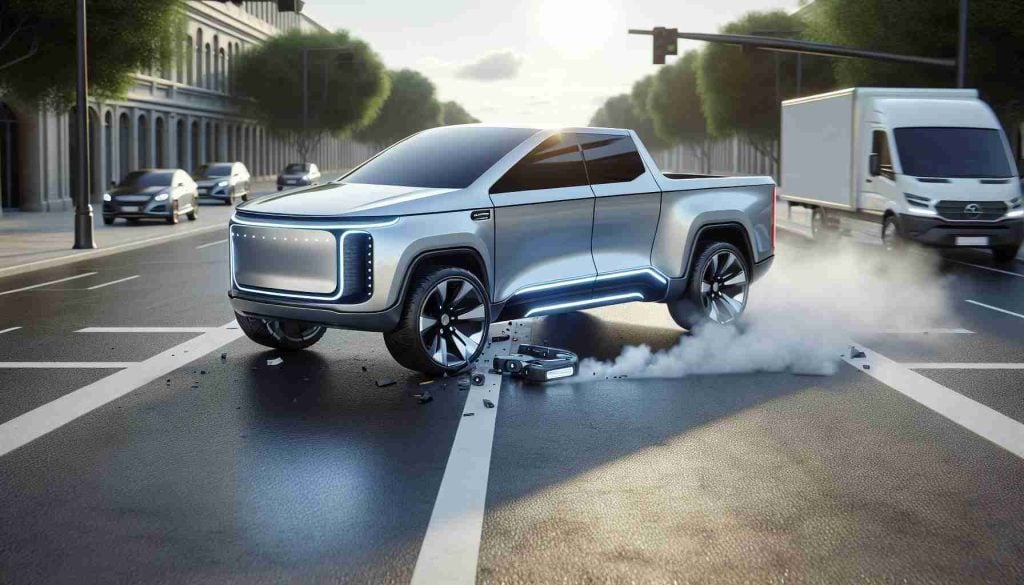- Electric bicycles are rapidly transforming urban transportation, shifting from novelties to essential city staples driven by eco-consciousness and practicality.
- The e-bike market, valued at $2.16 billion, is projected to reach $9.96 billion by 2033, as more commuters seek sustainable alternatives to fossil-fuel vehicles.
- Rising fuel costs and increasing urban congestion make e-bikes an attractive solution, with cities like New York and Tokyo enthusiastically embracing the trend.
- E-bike subscription models offer flexibility, reducing high ownership costs and including maintenance, repairs, and bike swaps in a convenient monthly fee.
- Challenges exist, such as high initial provider costs and the need for charging infrastructure, but innovation and customer service are key to overcoming these hurdles.
- E-bike subscriptions are not a temporary trend but a significant evolution in urban mobility, promising to transform city travel and lifestyles.
Electric bicycles, the silent revolution in urban transportation, are charging ahead with unmatched momentum. Imagined once as novelties, they are swiftly becoming staples in city life, driven by the dual engines of ecological consciousness and urban pragmatism. With a market currently humming at $2.16 billion, e-bike subscription platforms are set to soar to $9.96 billion by 2033, as global commuters pedal away from fossil-fueled frustrations.
What fuels this ascent? Spiraling fuel costs inject urgency into the search for greener alternatives, while the rhythm of modern life syncs ever more with sustainability. E-bikes glide in, promising not just eco-convenience but a transformative ride, especially poignant in bustling metropolises like Mumbai, where pollution and gridlock reign supreme. As citizens shift from car keys to handlebars, cities like New York and Tokyo embrace this shift with zeal.
The subscription model reimagines how we experience e-bikes, offering flexibility that resonates with the urban commuter’s heart. Gone are the days of high ownership costs. Instead, a modest monthly fee opens the door to a seamless ride—maintenance, repairs, and even bike swaps handled with aplomb. It’s this dramatization of convenience that entices users, ready to swap crowded subways for the open road.
Yet, hurdles remain. High initial costs for providers and the need for widespread charging infrastructure pose challenges. But even as these obstacles loom, there’s no brake on innovation. Companies differentiate through sharper customer service, building the road to tomorrow’s mobility.
Amidst the swirl of progress and potential, one message emerges clear: E-bike subscriptions aren’t merely a phase, they are the next iconic evolution in how urbanites travel, transforming not just streets but lifestyles, one ride at a time.
The Electric Bike Boom: Unveiling New Insights and Future Prospects
How-to Guide: Embracing E-Bike Subscriptions
The e-bike subscription model is emerging as a game-changer in urban mobility, offering an accessible way to experience eco-friendly transportation without the burden of ownership. Here’s how you can get on board:
1. Choose a Provider: Research various e-bike subscription services, considering factors such as pricing, bike models, and service areas.
2. Select a Plan: Subscription plans vary in terms of duration (monthly, quarterly, annually) and perks (bike swaps, maintenance). Select one that fits your lifestyle and commuting needs.
3. Registration: Sign up via the provider’s website or app. Provide necessary details and review the terms and conditions.
4. Get Riding: Arrange for the bike to be delivered or pick it up from a designated location. Enjoy unrestricted rides with included services like maintenance and support.
Pros and Cons of E-Bike Subscriptions
Pros:
– Cost-Effective: Eliminates high upfront costs associated with purchasing an e-bike.
– Maintenance Included: Providers often cover maintenance and repairs, reducing the hassle for users.
– Flexibility and Freedom: Enables users to switch models or cancel subscriptions as needs change.
– Eco-Friendly: Supports sustainable urban transportation, reducing carbon footprints.
Cons:
– Limited Models: Access might be restricted to specific models offered by the provider.
– Location Bound: Availability is typically limited to urban areas covered by the service.
– Subscription Costs: While monthly fees are often lower than loan payments for owning a bike, they can add up over time.
Market Forecasts and Trends
The e-bike subscription market is forecasted to reach $9.96 billion by 2033, driven by the rising demand for sustainable transport options. Increasing urbanization and environmental mandates will likely boost growth. Cities are expected to further develop bike-friendly infrastructure, making e-bikes a central fixture of urban mobility networks.
Innovations and Security Aspects
Innovations in battery technology and charging infrastructure are underway to support e-bike adoption. Security remains a concern; however, advancements in GPS tracking and advanced lock mechanisms are being integrated to deter theft and ensure user safety.
Predictions for Future Mobility
Several trends predict a promising future for e-bikes in urban settings:
– Increased Adoption in Global South: As cities in Asia and Africa address pollution and congestion, e-bikes are likely to gain prominence.
– Integration with Public Transport: Collaborations between e-bike services and public transit systems may offer seamless multi-modal travel options.
– Expansion of Charging Networks: Investment in charging infrastructure will address current limitations, enabling longer and more extensive commutes.
Suggested Links
For more information on sustainable urban mobility and the future of e-bikes, visit these reliable resources:
– World Resources Institute
– IEEE
– Urban Institute
Most Important Questions and Answers
1. How does the subscription model solve urban commuting problems?
The e-bike subscription model offers urban commuters a flexible, cost-effective, and sustainable transport option, reducing dependency on cars and public transit, thereby easing congestion and pollution.
2. What are the biggest barriers to widespread e-bike adoption?
High initial costs for providers and inadequate charging infrastructure are significant barriers. However, as the market grows, solutions such as improved battery tech and broader charging networks are likely to emerge.
3. Can e-bikes fully replace other modes of urban transport?
While e-bikes are highly effective for short to medium urban commutes, complete replacement of cars and public transit isn’t feasible yet. Instead, they will likely complement existing transport systems, especially in increasingly bike-friendly cities.
